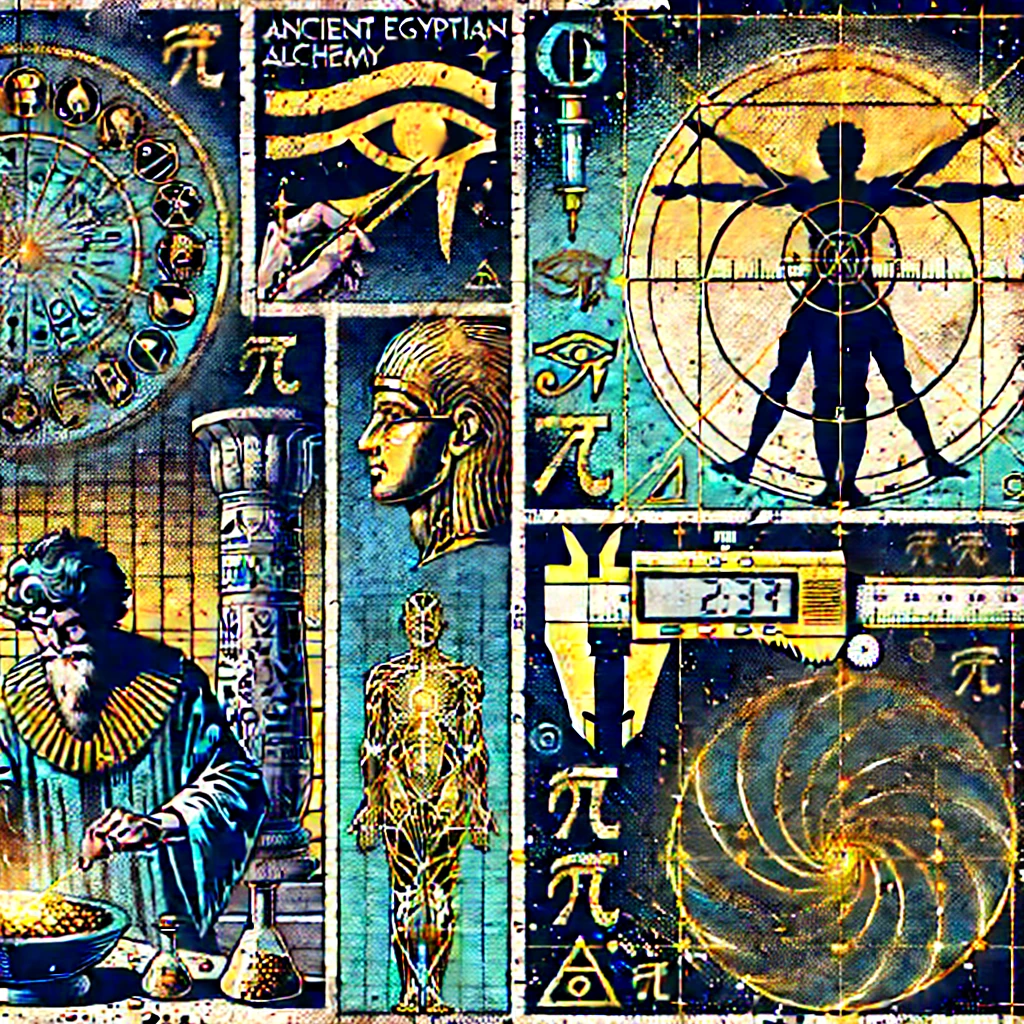Ancient Egypt Alchemy Phi Human Body
Mathematical ratio
Fibonacci sequence
Golden ratio
1.618
0.618
PHI
Dan Winter
MERU Foundation
implosion
resonance
conjugation
https://www.youtube.com/watch?v=VMf_BH2q2Bo
Danny Wilten explores the intersection of ancient Egyptian alchemy, the golden ratio (phi), and its potential relationship with the human body. While specific details of Wilten’s work on this topic may vary, here are some general concepts he might discuss:
1. Ancient Egyptian Alchemy: Wilten may delve into the practice of alchemy in ancient Egypt, which involved the study of natural substances and the pursuit of spiritual enlightenment. Ancient Egyptians believed in the concept of transformation and sought to transmute base metals into gold, both literally and metaphorically, as a symbol of spiritual purification and transcendence.
2. Phi (Φ) and Sacred Geometry: The golden ratio, often represented by the Greek letter phi (Φ), is a mathematical proportion found in nature, art, and architecture. It is believed to convey aesthetic beauty and harmony and has been associated with spiritual and mystical significance. Wilten may explore how phi was used in ancient Egyptian architecture, art, and symbolism, suggesting that it reflects underlying principles of balance and proportion inherent in the natural world.
3. Phi in the Human Body: Some theorists propose that the golden ratio is present in various aspects of the human body, including the proportions of facial features, limb segments, and overall body proportions. Wilten may discuss the idea that phi represents an idealized template for human anatomy, reflecting the harmonious relationship between different parts of the body.
4. Alchemy and Inner Transformation: Beyond its literal associations with metallurgy, alchemy is often interpreted as a symbolic system for inner transformation and spiritual enlightenment. Wilten may suggest that the pursuit of the Philosopher’s Stone, a central goal of alchemy, represents the quest for self-discovery and the realization of one’s true potential, akin to the concept of self-actualization in psychology.
5. Integration of Body, Mind, and Spirit: Wilten may explore how the concepts of alchemy, phi, and the human body intersect to form a holistic understanding of human existence. He may emphasize the importance of integrating physical, mental, and spiritual aspects of being in order to achieve balance, harmony, and fulfillment in life.
Overall, Danny Wilten’s exploration of ancient Egyptian alchemy, phi, and the human body likely offers a multifaceted perspective that bridges ancient wisdom with contemporary insights into the nature of existence and the human experience. His work may invite contemplation on the interconnectedness of the physical, metaphysical, and spiritual dimensions of reality.
The article “Ancient Egypt Alchemy Phi Human Body” by Danny Wilten, published on April 7, 2021, explores the connections between ancient Egyptian alchemy, the golden ratio (phi), and the human body.
Wilten delves into the practice of alchemy in ancient Egypt, highlighting its focus on transformation and the pursuit of spiritual enlightenment. He discusses the Egyptians’ efforts to transmute base metals into gold, both as a literal endeavor and as a metaphor for spiritual purification and transcendence.
The article examines the golden ratio, represented by the Greek letter phi (Φ), a mathematical proportion found in nature, art, and architecture. Wilten suggests that phi conveys aesthetic beauty and harmony and explores its application in ancient Egyptian architecture, art, and symbolism, proposing that it reflects principles of balance and proportion inherent in the natural world.
Wilten also discusses the presence of the golden ratio in various aspects of the human body, including the proportions of facial features, limb segments, and overall body structure. He proposes that phi represents an idealized template for human anatomy, reflecting the harmonious relationship between different parts of the body.
Beyond its literal associations with metallurgy, alchemy is interpreted as a symbolic system for inner transformation and spiritual enlightenment. Wilten suggests that the pursuit of the Philosopher’s Stone represents the quest for self-discovery and the realization of one’s true potential, akin to the concept of self-actualization in psychology.
The article emphasizes the integration of physical, mental, and spiritual aspects of being to achieve balance, harmony, and fulfillment in life. Wilten’s exploration offers a multifaceted perspective that bridges ancient wisdom with contemporary insights into the nature of existence and the human experience, inviting contemplation on the interconnectedness of the physical, metaphysical, and spiritual dimensions of reality.
